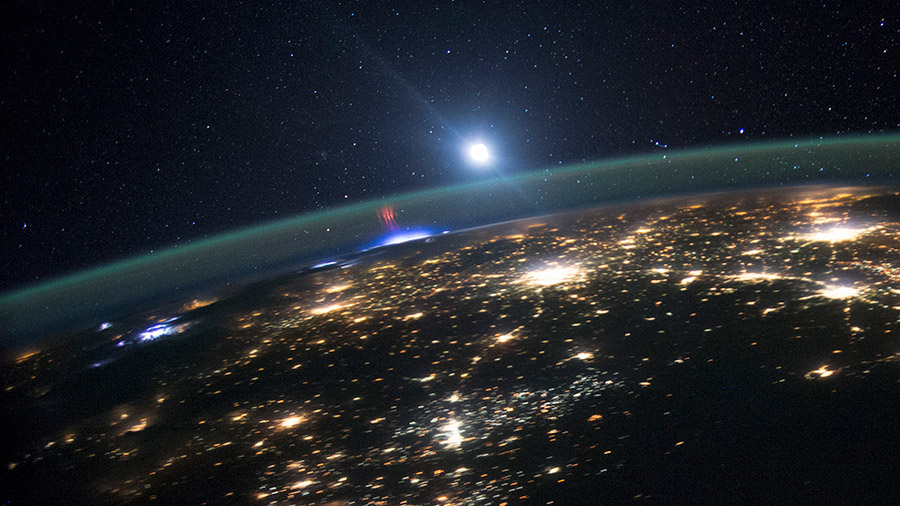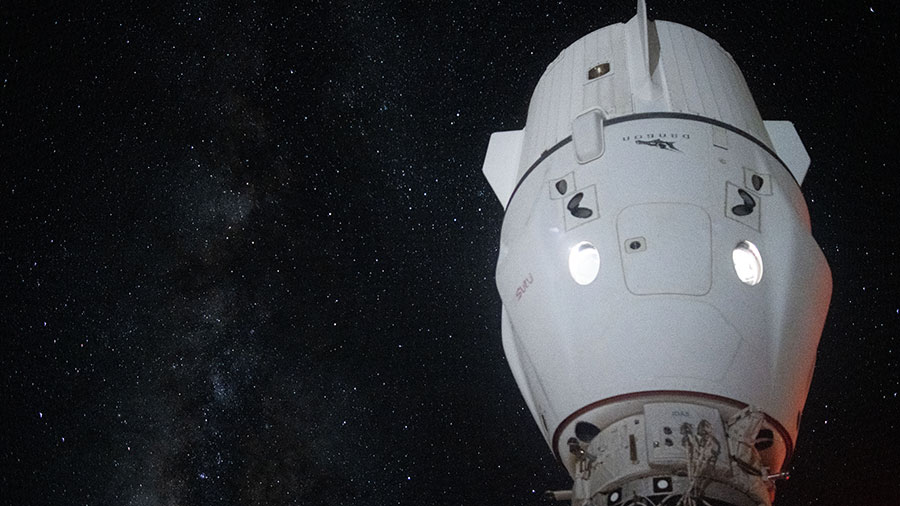Station Schedule Returns to Science on Tuesday

Microgravity science picked up on Tuesday following the previous day’s focus on lab maintenance and housecleaning activities aboard the International Space Station. The nine orbital residents set up a host of science gear for external research and explored future space piloting techniques while also concentrating on daily household tasks.
Starliner Commander Butch Wilmore from NASA pointed a pair of cameras in the cupola toward Earth for thunderstorm monitoring. He plugged the high-speed Thor-Davis camera and a regular digital camera into the Astro Pi computer to record lightning and electrical activity at speeds up to 100,000 frames per second. Observations may help improve Earth climate models, lead to a better understanding of atmospheric dynamics, and demonstrate the advanced camera’s potential for future space applications.
NASA astronaut and Starliner Pilot Suni Williams installed the ArgUS Mission 1 research hardware inside the NanoRacks Bishop airlock where it will soon be robotically placed outside in the vacuum of space for experimentation. The advanced technology demonstration consists of three types of payloads designed to explore communications, computer processing, and high-definition video in the external microgravity environment.
Expedition 71 Flight Engineer Tracy C. Dyson spent the first half of her day inspecting a variety of station hardware including cryogenic gloves, cold stowage hardware, and the BioFabrication Facility, a research device being tested for its ability to print organ-like tissues in microgravity. During the afternoon, Dyson turned her attention to commercial activities and tested proprietary gear inside the Kibo laboratory module.
NASA Flight Engineers Matthew Dominick, Mike Barratt, and Jeanette Epps spent all day Tuesday on maintenance tasks. Dominick replaced carbon dioxide removal components in the Destiny laboratory module then videotaped his crew quarters’ airflow ducts as mission controllers monitored in real time. Barratt cleaned ventilation systems in his crew quarters located in the port side of the Harmony module before servicing electronic components on the Kermit fluorescence microscope. Epps started her day relocating a vibration sensor then took a cognition test just before lunchtime. In the afternoon, she set up a thigh cuff to study space-caused fluid shifts in astronauts then examined electrical systems supporting life support components.
Station Commander Oleg Kononenko from Roscosmos was back on inspection activities in the aft end of the Zvezda service module. He photographed glass panes and installed a smoke detector in Zvezda’s rear port where the Progress 87 cargo craft is docked. Flight Engineer Nikolai Chub studied futuristic spacecraft and robotic piloting techniques on a computer during the morning then assisted Kononenko with the Zvezda inspection activities in the afternoon. Flight Engineer Alexander Grebenkin focused his efforts on life support system maintenance in the orbital outpost’s Roscosmos segment.
Learn more about station activities by following the space station blog, @space_station and @ISS_Research on X, as well as the ISS Facebook and ISS Instagram accounts.
Get weekly video highlights at: https://roundupreads.jsc.nasa.gov/videoupdate/
Get the latest from NASA delivered every week. Subscribe here: www.nasa.gov/subscribe
Powered by WPeMatico
Mark Garcia







